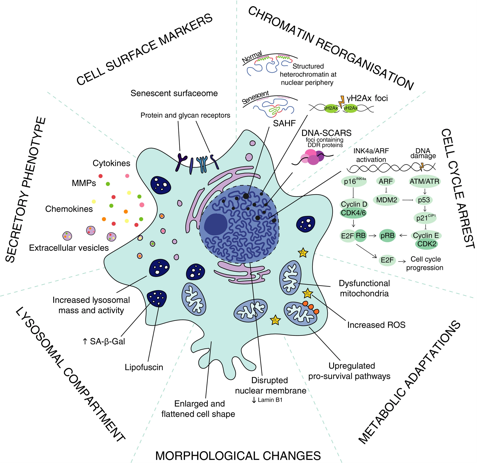
Cellular senescence is characterized by an arrest of the cell cycle, induced by various harmful stimuli. Traditionally considered a consequence of the damaging agent, today it is interpreted as a defense mechanism of the cell that, by blocking proliferation, prevents the propagation of damage. Senescent cells release numerous pro-inflammatory cytokines (SASP) responsible for the formation of an inflammatory microenvironment that, in the long term, can generate and/or amplify the onset of age-related diseases. The stimuli and molecular mechanisms involved in the triggering and perpetuation of senescence are not yet fully understood; therefore, the aim of the research is focused on the identification of harmful stimuli, the signaling pathways involved in the triggering the senescent process and on the selection of potential senolytic and/or senomorphic agents counteracting cellular senescence. The research is mainly carried out on mesenchymal stromal cells (MSC), a subpopulation of cells located in tissues of mesenchymal origin, responsible for tissue homeostasis and regeneration following damage, and on the role played by senescent MSC in the onset and development of age-related pathologies. In particular we have been focusing our attention on the correlation of cellular senescence with osteoarthritis, aortic aneurysm and idiopathic pulmonary fibrosis.